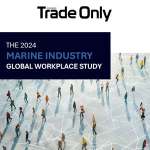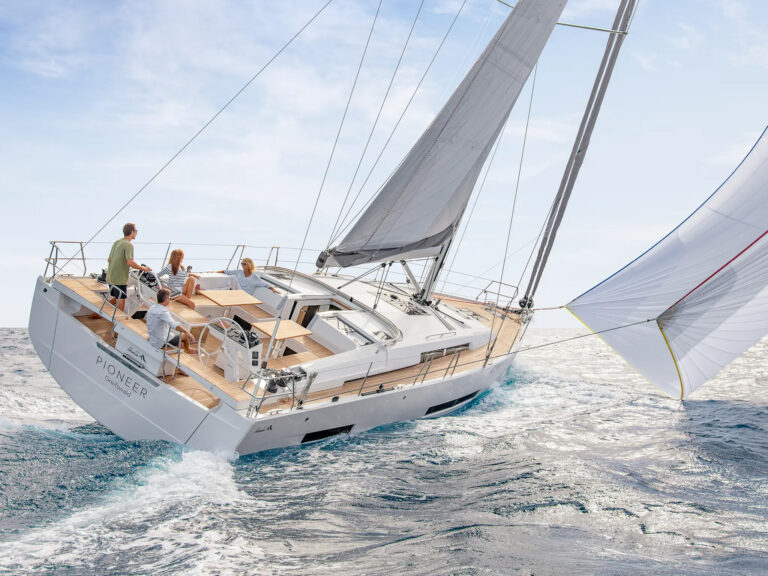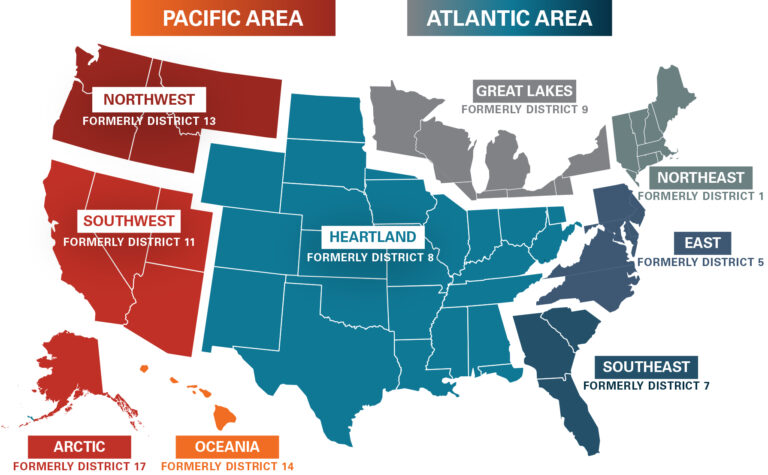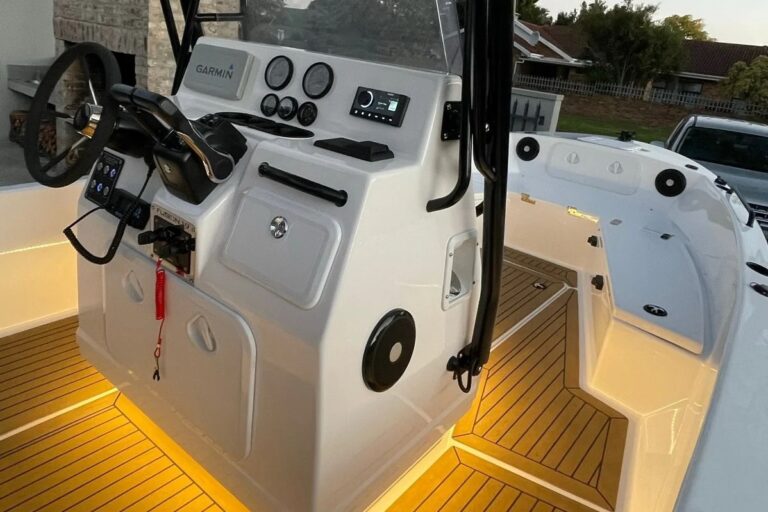What’s that saying printed on those motivational posters? Adversity breeds excellence? Adversity breeds strength? Is it character? Resilience?
No matter: The recreational marine industry is likely going to need them all as the calendar flips to 2024. That’s the big takeaway about year-ahead expectations from thought leaders in technology, engines, boat sales, policy advocacy, mergers and acquisitions, and the labor force. “There’s enough negativity out there already, and we’re going to layer on top of that an election cycle,” says Matt Gruhn, president of the Marine Retailers Association of the Americas. “It’s going to be a tough marketplace.”
Still, there’s consensus that the overall long haul for the industry looks good. Here’s more detail about how experts see the bumpy stretch ahead.
Technology
Jason Arbuckle, marine autonomy technical lead for Brunswick Corp., says he’s seeing an increasing amount of brain power applied not just to creating technologies, but also to combining them. Things like automation, electrification, sensors, GPS, cameras — all of these and more can now be bundled in ways that previously were not possible.
“You’re going to see a lot of ways that people will combine existing capabilities and systems with these technologies to push it further and further,” Arbuckle says. “There will be leaps and bounds when someone has a big breakthrough, but the combination of the technologies is where we’re going.”

“A boat we showed in September in New York was a joystick boat that has a perception system added to it,” he adds. “That combination wasn’t feasible even a few years back, and the joystick wasn’t feasible 15 years ago. Now we can combine these things.”
Jarrod Seymour, vice president and marine segment leader for Garmin, says boaters will also be able to see more of the information that combined systems generate. One example is Garmin’s GPSMap 9000, which premiered this past fall as the marine industry’s first 4K multifunction display. “With more pixels, we can present more information,” he says. “When you zoom in, maybe you can’t see where you’re going. So it’s always a trade-off with detail. With the higher resolution, you can do both. It’s similar with sonar, too. We collect a lot more information than can be displayed on the screen.”
Seymour says the idea of higher-resolution screens is likely to trickle down to displays smaller than 19 inches. Similarly, he says, advanced systems such as Live Sonar should become available in smaller, more affordable packages. “This is technology that was not even reachable before, so we’re coming up with new ideas for how to apply it,” he says.
Engines
Patrick McGovern, president of Mack Boring — which distributes Yanmar, Scania, Isuzu, Oxe, Suzuki and ePropulsion engines — says he’s seen signs of a slowdown for a few months. The underlying problems are higher interest rates and flagging consumer confidence. “The smaller the boat size and price tag, the more you’re seeing inventories build up,” McGovern says. “Some dealers even have model leftovers, which we haven’t seen in years.”

In good news, he says, investments in R&D seem to remain strong worldwide. “I’ve been very aggressive about traveling globally this year,” he says. “I went to China; I’m just back from [Metstrade]. You look at Europe, and they’re working on electric, self-sustaining, foiling ways of building boats to keep pushing on sustainability. Nobody knows how quickly that turns into retail sales, but I’m seeing no slowdown in the consistent push to see how we’re going to be providing recreational boats to people five or 10 years from now.”
The electric-engine manufacturer ePropulsion, for instance, recently introduced an integrated outboard system with electric steering for easier installation. “These are the kinds of things that are great for customers because the packages they buy have features from one source,” he says. “It helps with maintenance and easier serviceability down the road.”
Scania, too, is innovating with its E-Machine, which McGovern expects to see in production by 2025. And, he says, Yanmar has details coming this year on an electric hybrid engine. “The combustion companies are talking about more sustainable fuels, the HVO, the biofuels,” he says. “Everybody is working to expand the range of fuel options, which gives customers more options and you can go a lot closer to carbon-free usage.”

Boat Sales
Eric Wold, senior analyst with B. Riley Securities, expects 2024 retail sales to be “down a little bit depending on the price point of the boat.” In terms of unit sales, he’s estimating a 4% to 8% drop.
While cash buyers aren’t worried about interest rates, higher costs are affecting certain types of buyers at lower price points. “Brunswick still has a long wait list for Whalers, but with the ski-wake boats from Malibu or Mastercraft, they’re still seeing pressure,” Wold says. “It’s more dependent on the boat relative to the buyer. A million-dollar purchase to one person is a lot different than a million-dollar purchase to another person.”
The big-picture concern is the mentality shift that’s happened since the pandemic, he adds. “It went from everything is affordable and everybody wants one,” he says, “to interest rates are high, and there’s uncertainty about the economy, and people’s jobs might be at risk.”
Gruhn, with the MRAA, also expects this year’s biggest hurdle for boat dealers to be consumer uncertainty. “Getting people to come through the door and consider buying a boat is going to be a bigger challenge than we’ve had in a long time,” he says. “It’s because of the compounding impact that inflation has had on the price of boats. It’s the highest interest rates we’ve had in a long time for consumers who buy boats on loans. It’s due to this seemingly never-ending projection that there’s going to be a recession in the next six months, which they’ve been saying since late 2021.”

Dealers must remain positive to succeed, Gruhn adds. “I just got back from all these dealer meetings, and I started them all by asking, ‘What’s on your mind for next year?’ ” he says. “Every session that I did was negativity, negativity, negativity. The final one was: ‘We’re going to capture market share because everybody else will be operating from fear.’ That’s the mentality that we need.”
Policy Advocacy
Callie Hoyt, vice president of government relations for the National Marine Manufacturers Association, says her team is focused on four main issues: access to waterways, boating infrastructure, tariffs of various kinds, and sustainability and innovation. High on her radar is the Water Resources Development Act, which comes up for reauthorization in the U.S. Congress every two years. This is one of those years. Among other things, the WRDA sets policy and funding for the U.S. Army Corps of Engineers.
“It’s a great, fixed opportunity to be making incremental improvements to how recreation is prioritized within the scope of the nation’s water infrastructure policy,” Hoyt says, adding that the NMMA hopes to establish a fixed revenue stream through recreation fees, to fund Army Corps of Engineers projects that benefit boaters.

NMMA is also battling speed restrictions that NOAA has proposed to protect whales from vessel strikes. The final NOAA rule is expected to be released in 2024, followed by lawsuits against the agency and action in Congress. “There are members in the House and Senate that have indicated they’ll be filing Congressional Review Act efforts to rein the rule back in,” Hoyt says. “We also have the bipartisan Protecting Whales, Human Safety and the Economy Act. It tells NOAA to put the brakes on this rule and instead appropriate $5 million to a real-time monitoring program.”
NMMA is also continuing its work on Section 301 and retaliatory tariffs, and is tracking an emerging threat of duties being imposed on aluminum-extrusion imports. On sustainability and innovation, she says, NMMA plans to use new research from the International Council of Marine Industry Associations that shows recreational marine products will need multiple solutions to decarbonize the industry. “There is not going to be a silver bullet,” she says. “Now that we have data to support that, we will be translating it into policies that tap into the existing infrastructure.”
Mergers & Acquisitions
Chad Lyon, managing director of marine and RV for Wells Fargo Distribution Finance, says higher long- and short-term interest rates mean there’s more of a cost to acquisitions in terms of debt and capital. “That creates a little bit of a headwind, or at least something that acquirers are going to want to understand as they wade into this market,” Lyon says. “The economic uncertainty is probably not helpful, either. Retail sales have been down a little bit, and inventories have returned to normal and gone a little higher than on a historical basis, and that creates some uncertainty for acquirers.”
Overall, Lyon says he expects near-term challenges to continue for mergers and acquisitions by boatbuilders and dealers. “We’ve seen a slowdown the last couple months of 2023, not as many deals getting announced in this space,” he says.
Lyon also watches the RV industry, where he says retail is down about 20%, leading some dealers to sell their businesses at reasonable prices. The same is not true in marine, he adds. “We’ve hardly seen any announced deals in marine in a while. I think RV has more dealers that are in that acquisition mindset, that are truly out and trying to be an acquirer. It’s not as opportunistic as you see in the boat business.”
If long-term interest rates drop, he says, that could help with retail financing and add to consumer demand for boats, piquing more M&A activity. “We’re hearing that qualified consumers don’t want to pay that high interest rate,” he says. “It’s not a lack of interest or a credit-quality issue with the consumer. It’s the payment.”
Workforce
Sarah Devlin, accreditation director for the American Yacht & Boat Council, says it’s hard to quantify where the boating industry stands in terms of labor and workforce, other than to say the nation’s low unemployment rate makes it an employees’ market. “Things shifted so aggressively in the past few years, even the statisticians and economists are having a hard time predicting what’s supposed to happen,” she says. “For instance, we were supposed to be in a recession in 2023, but consumers kept consuming, and we never saw that two-quarter downturn.”
The picture of workforce conditions can also change regionally, Devlin says. “When I visit schools, some of which are in the same regions surrounded by boatbuilders and yards, I see some are supported by local business and some aren’t,” she says. “While there are local shops that support a worker pipeline through training and education — Irish Boat Shop in Michigan is a great example — others are more keen to hire people who have had little to no training, pay lower wages and potentially burn through their employees very quickly. Or they can’t attract the talent they want because the skilled workers go to operations that offer higher wages, more benefits, better work-life balance, or what have you. That strikes me as a regional and geographical challenge, not necessarily a national one.”
This article was originally published in the January 2024 issue.












